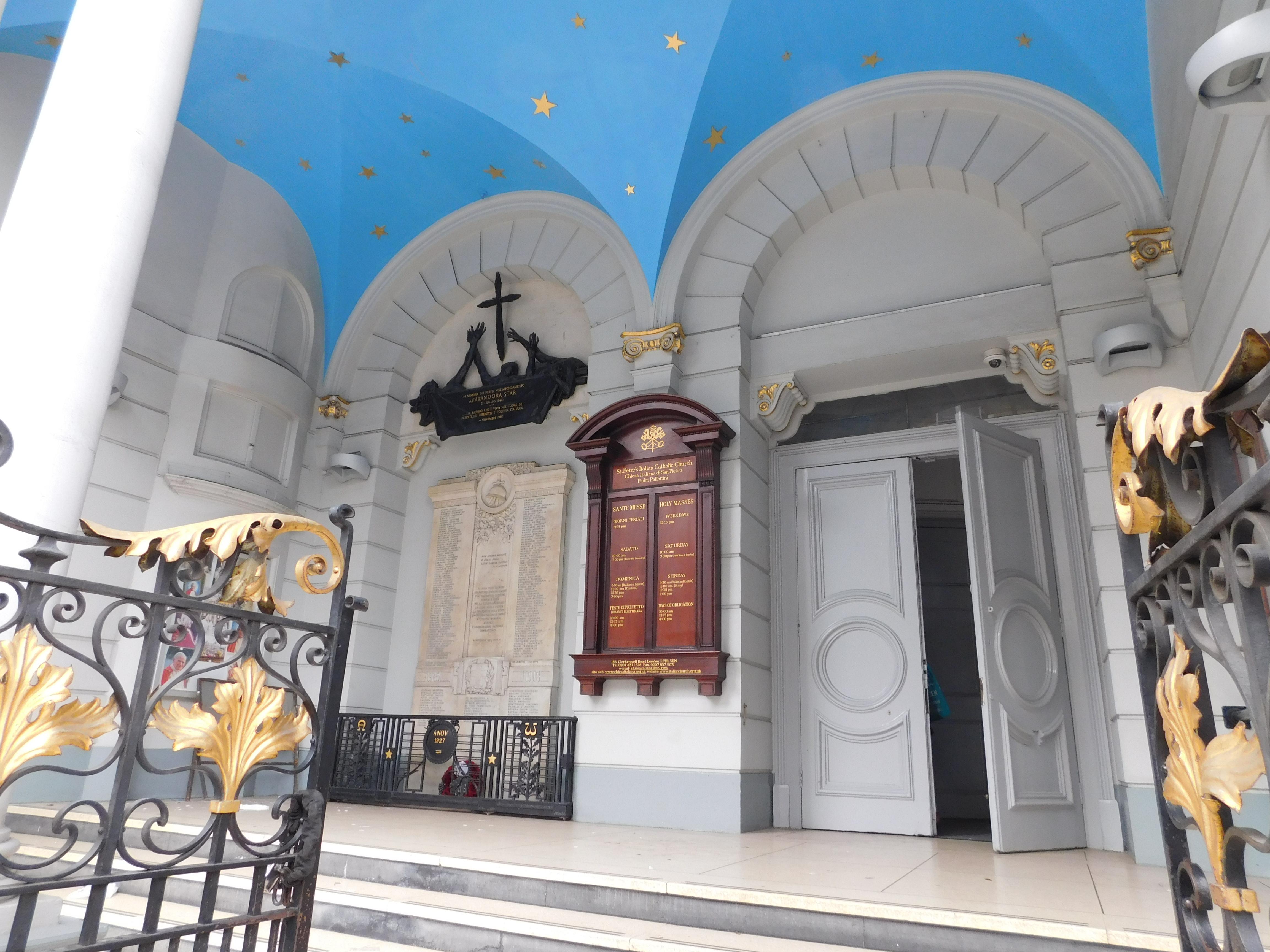St Etheldreda
Holborn, Greater London
St Etheldreda’s is the oldest Catholic church in England and one of only two remaining buildings in London from the reign of Edward I.

A piece of Italy in London.
Clerkenwell, Greater London
The church is of a scale and significance belied by its modest contribution to the townscape; hemmed in by other buildings, only the (later) narrow entrance front and loggia are visible. The design was conceived in the early 1850s, soon after the restoration of the Catholic hierarchy, when sensitivities about the ‘papal aggression’ were still high. It was modelled on the basilica of San Crisogono in Trastevere. Built in 1862-63, it was still the largest Catholic church hitherto in Great Britain
At the beginning of 1800 the area of Saffron Hill in London was a poor neighborhood with crowded and decadent streets. By 1850 there had been established about 2000 Italian immigrants who worked both as itinerant musicians, and as artisans; framers, builders of mirrors and barometers and other scientific instruments. The Italians prayed in the Capella Reale Sarda in Lincoln's Inn Fields. Because they did not have their own church.
In 1845 Saint Vincent Pallotti, Roman priest and founder of the Union of the Catholic Apostolate (Padri Pallottini), wanted to build a church for the Italian emigrants of London.
The Irish architect Sir John Miller-Bryson took as a model the basilica of San Crisogono in Trastevere in Rome.
It had to contain 3,400 people, but in the course of its work it was greatly reduced. At the time it was the only church in Roman basilica style built in Britain.
On April 16, 1863, the church of San Pietro was finally inaugurated and consecrated with great celebrations such as 'Church of St Peter for all nations'. Despite its small size compared to the original design, San Pietro gives great impression and admiration both for its size, being the largest Catholic church of the time in Britain, and for its style, being the only church in the nation in the basilical style Roman.
In the crypt a Polish chapel was created and the music attracted people of different faith. The church choir was excellent and regular concerts were held, with the participation of famous soloists and orchestras. Today's organ is part of the magnificent original organ built by the Belgian Annaesens in 1886 considered, at the time, the best in the country.
The facade consists of a loggia and a portico with two arches, dominated by three niches. In the central niche there is the statue of Christ and in the lateral ones the statues of San Bede and San Giorgio. Among the niches there are two large mosaics that show the miracle of the miraculous Peach and Jesus who gives the keys of the Kingdom of Heaven to St. Peter. Above the façade there is the 33 meter high bell tower, built in 1891, with its large bell known as 'The Steel Monster'. In the loggia there are two important monuments: one dedicated to the fallen of the two world wars and the other to the 446 Italians who lost their lives in the sinking of the Arandora Star.
During the Second World War many Italians residing in Great Britain were interned. In that period, from 1939 the church passed under the control of the Pallottini Irlandesi and returned in the hands of the Italian Province only in 1953.
Holborn, Greater London
St Etheldreda’s is the oldest Catholic church in England and one of only two remaining buildings in London from the reign of Edward I.
City of London, Greater London
The chapel has been, variously, the Chapter House of a Carthusian monastery, a storage place for Henry VIII’s hunting equipment, and the private chapel of a Tudor mansion.
Smithfield, Greater London
There are very few historic places in London where the early medieval period is so beautifully preserved as at St Bartholomew the Great, even entry to the church is through a 13th century arch with a half timbered gatehouse.